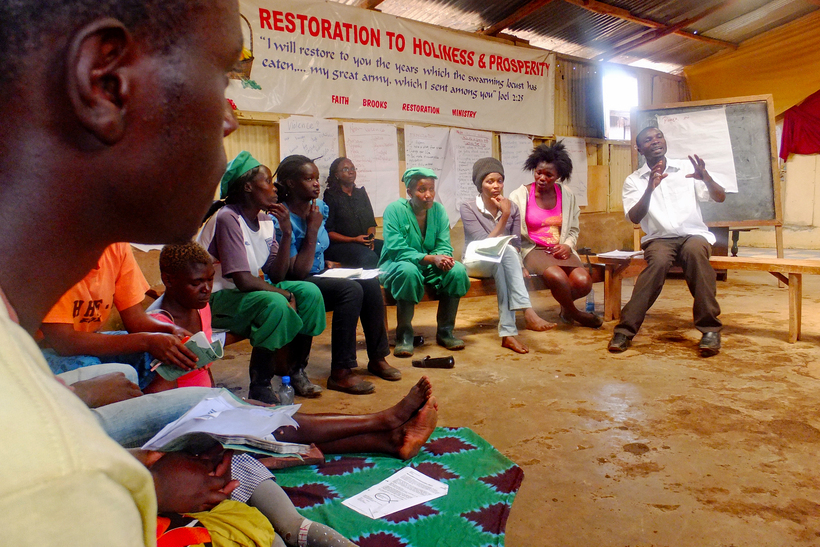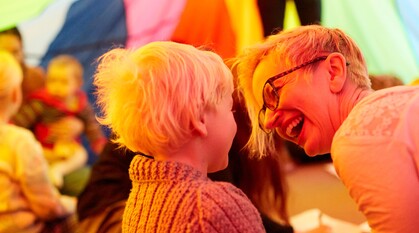How to heal divided communities: 5 tips from East African peace campaigners
Tobias Wellner takes a look at what we can learn from the successes of community peacebuilders in Rwanda and beyond.

Quakers in Britain support small East African peace organisations to train community peacebuilders. I take a look at what we can learn from their achievements.
Their successes lie in helping violently divided communities heal and find peace. What they have overcome hardly bears thinking about in our place of relative safety: civil war, genocide and violent unrest. Every single time I return from a visit I find myself thinking: their example can teach us so much about community peacebuilding.
From killings to peace
In 1994, at least 800,000 people were killed in just 100 days in Rwanda. People killed their neighbours, and family members killed their loved ones. After the genocide, Rwandan Quakers started to do what it takes to rebuild community relationships, and we support this work as it continues today.
Meanwhile, in Burundi, a brutal civil war went on for more than 11 years. Burundian peace activists (many Quakers among them) began to set up 'peace committees' across the country. Nowadays, these local peace committees are widely trusted and are often the first place people go when they face violence or injustice.
People from different ethnic groups and from different sides of the civil wars in Rwanda and Burundi were brought together – and continue to be brought together – by courageous peace activists.
So what are the key lessons we must keep in mind when we look closer to home?
1. Who am I?
When you want to bring two sides of a divided community together, you should first consider your own position:
- Does the community want my help?
- What is my position in this conflict? Am I neutral? If not, how will that influence my ability to bring the two sides together?
- Will I or my organisation been seen as trustworthy?
- Am I willing to help selflessly?
- Do I have the skills and means to facilitate or mediate? Are others better positioned to help?
2. Who are they and what do they need?
The East African peacebuilders I work with spend a lot of time on analysis. This is because you need to have a really good understanding of each side of the conflict before you can even consider intervening.
Two key questions to consider during this process might be:
- What does each side want from the conflict?
- Are there diverse positions within each side?
You need to develop a really good understanding of each side's fears and challenges. For your next step, you also need to know what each side needs in order for them to be willing to meet their counterpart.
3. How might I build trust here?
My colleagues really stress the importance of trust. When you are trying to bring people in conflict together, each side needs to be able to trust you a lot. They need to trust that you do not have an interest in their conflict, other than building peace. All involved also need to trust that you can offer and provide a neutral space in which they feel safe to engage with the other side.
Without building trust, you cannot build peace. Consider how you have built trust with friends in the past; can you use the insights you glean here to improve other, less trusting, relationships?
4. How will I create common ground?
Once you have managed to gain trust on both sides, your next step is to, if possible, first offer a training on peace and nonviolence to each side individually.
Christine, a Burundian peacebuilder, tells me: “As a peacebuilder it is your job to prepare a theme that both sides can agree on. Ideally it's a theme that allows them to understand their own roles and positions."
Bringing the two sides of the conflict together for the first time is the 'holy grail'. It will be a very difficult time and you need to be well prepared to hold the space in which these two actors meet.
One way of starting such a meeting could be to speak about a conflict example that is not linked to the two sides. The idea is that when speaking about this other conflict, both sides are encouraged to think about their own positions.
The first encounter is a success if you manage to get individuals from both sides to sit together in pairs and have open, peaceful conversations. This will create a space of shared experience.
5. Cultivate shared projects
Your job does not end there. To ensure that conflict does not break out again, you need to ensure that there is a space in which both sides can continue to interact with one another.
In Rwanda and Burundi peacebuilders often support setting up shared cooperatives or farming projects which involve participants from both sides of the conflict. These projects provide continuity and a space where people can deepen and expand their shared experience, and ultimately rebuild a peaceful coexistence. According to my colleagues, excellent listening and analysis skills are as important as a passion for more peaceful societies.
There is plenty more to learn. Here are a few ways to get involved:
- Watch short video explainers compiled by the Turning the Tide East Africa team, sharing perspectives on silence, nonviolence and conflict resolution.
- Set up an internet call with an East African peace activist to learn more. Perhaps you could ask them for tips on how to earn trust, or develop a common cause. As a first step, make contact with me and I can connect you with someone from the Turning the Tide East Africa team.
- Follow @civilresistance, @Nonviolence_Now, and @AfricaQPSW on Twitter for updates on global nonviolent movements.


